Sync Setup - Ableton Live! on a separate computer
Introduction
The following explanation and screenshots are related to Ableton Live! version 10, but the steps will be similar for other versions.
The easiest way to provide Video Sync with incoming MTC/MMC data from another computer, is to setup a network MIDI connection using Apple's built-in Audio MIDI Setup tool to transmit all the MIDI data between the two computers. It is usually not necessary to buy a separate MIDI interface and cables to connect the MTC sending and receiving computers, although a cabled MIDI connection can be used if preferable. Since MIDI was developed in the 80s, it has a really low data rate. Therefore it should not be a problem to use network MIDI in a Wi-Fi environment.
A cabled ethernet network connection is the preferred method for reliability.
The following instructions assume that you have two Apple Macs: one with Video Sync; the other with Ableton Live!.
Although not listed as a separate DAW Sync Setup Option, this Network MIDI setup incidentally also works flawlessly with Video Sync on the same computer.
If the Ableton Live! computer is a PC, rtpMIDI is a free PC equivalent to Apple's network MIDI implementation. Download & setup instructions can be found here: http://www.tobias-erichsen.de/software/rtpmidi.html
Our thanks to Tobias Erichsen for this invaluable tool.
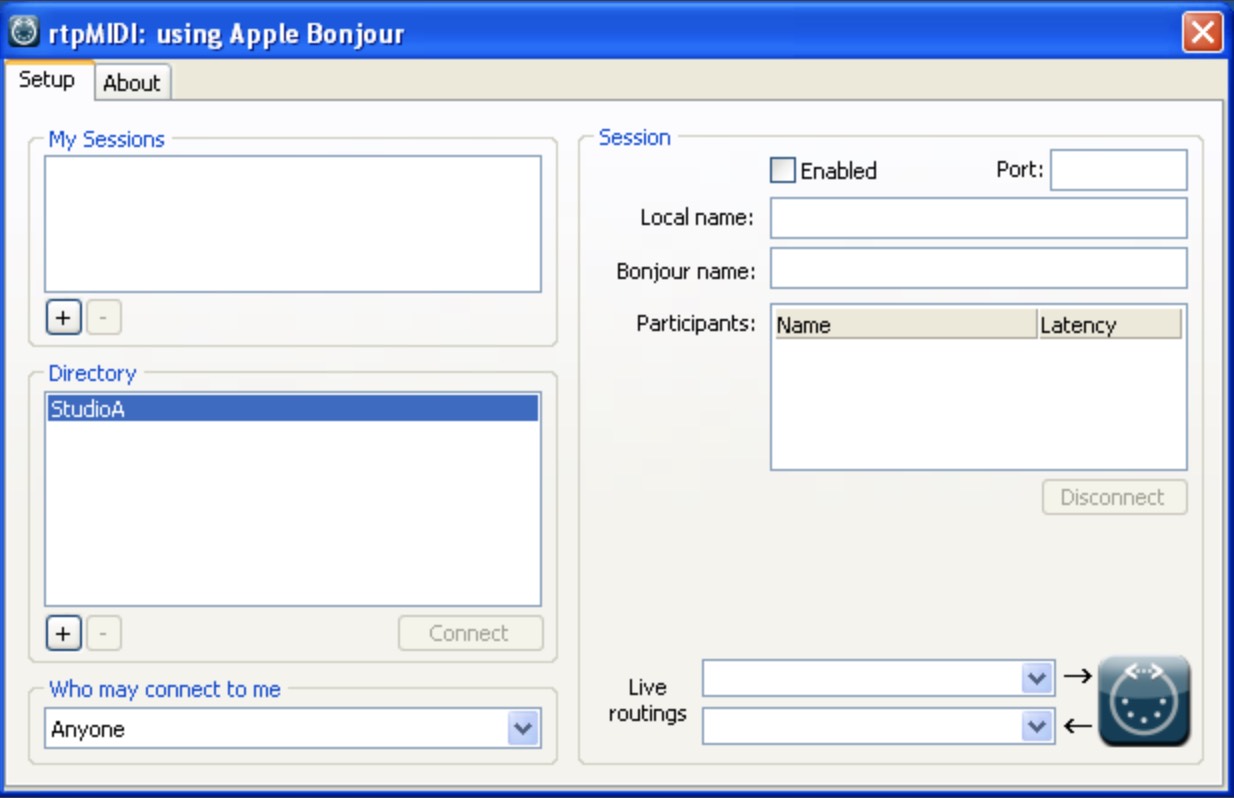 {width=80%}
{width=80%}
Configuring Audio MIDI Setup on the Ableton Live! computer to send MTC & MMC over the Network
On the Ableton Live! computer, go to Applications > Utilities & open Audio MIDI Setup. The MIDI Network Setup window should appear:
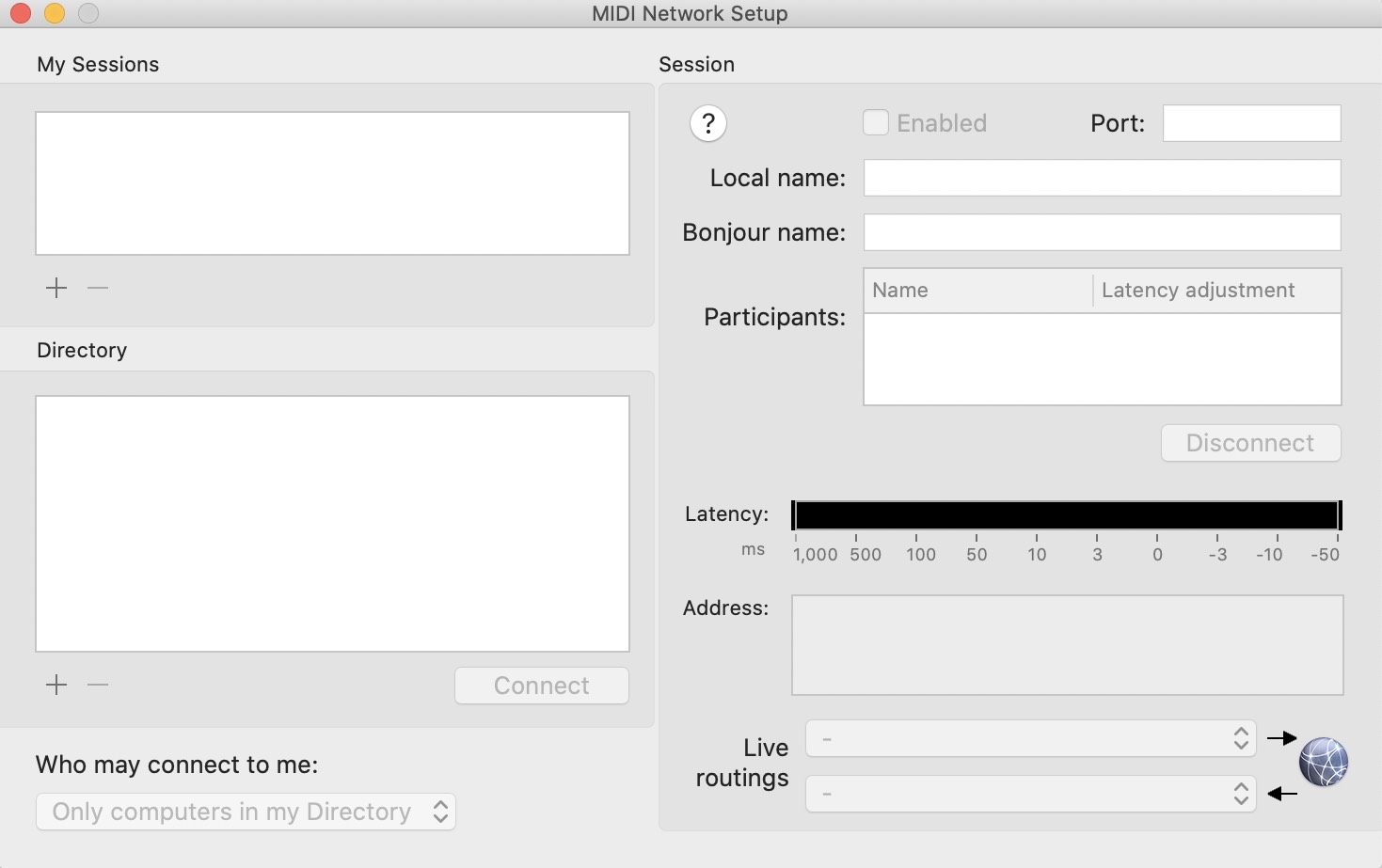 {width=80%}
{width=80%}
If the window is not shown, select Window > Show MIDI Studio & then from the MIDI Studio menu that appears, select Open MIDI Network Setup.
In older versions of Audio MIDI Setup where this option is not present, it can accessed by double-clicking the Network device icon in the default MIDI Studio window.
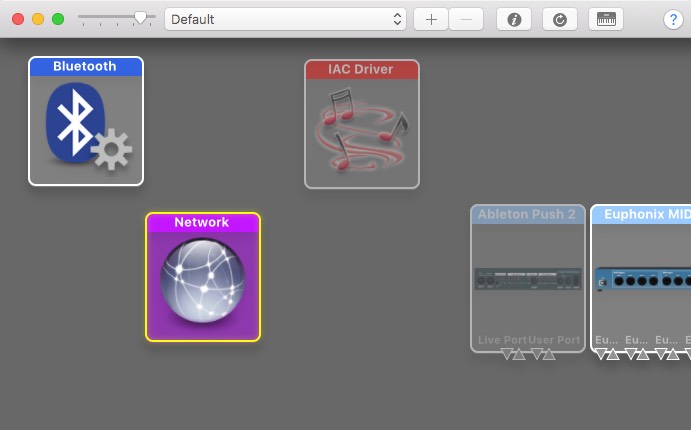 {width=80%}
{width=80%}
In the My Sessions field top left, create a new session by clicking +.
Click the checkbox to the left of the name to enable the session.
Rename it (computer 1 name) MTC/MMC Send (or something similar) - e.g. MacProHDX MTC/MMC Send This name will automatically be copied to the Local name field.
The Local name is the name that appears on this local computer.
Copy this name & paste it in the Bonjour name field.
The Bonjour name is the name that is displayed on the other computers in the network.
Although a session can be used in either input or output directions, to avoid confusion it is recommended to stick to one direction by noting this in the session name, e.g. Send or Out.
MTC & MMC do not require separate Network sessions made for each - they can share the same session.
Set the Port: field to 5004.
Select Anyone in the Who may connect to me dropbox on the bottom left.
 {width=80%}
{width=80%}
Configuration is complete for the Ableton Live! computer. This should not need to be set up again in future.
Configuring Audio MIDI Setup on the Video Sync computer to receive Network MTC & MMC
On the Video Sync computer, close Video Sync & open Audio MIDI Setup. Open the MIDI Network Setup window as described above. The Ableton Live! computer should be visible in the Directory field - showing (computer 1 name) MTC/MMC Send with a green active circle to the left.
 {width=80%}
{width=80%}
In the My Sessions field top left, create a new session by clicking +.
Click the checkbox to the left of the name to enable the session.
Rename it (computer 2 name) MTC/MMC Receive (or something very similar)- eg MacbookPro MTC/MMC Receive.
This name will automatically be copied to the Local name field.
Copy this name & paste it in the Bonjour name field.
Set the Port: field to 5006.
Select Anyone in the Who may connect to me: selection field on the bottom left.
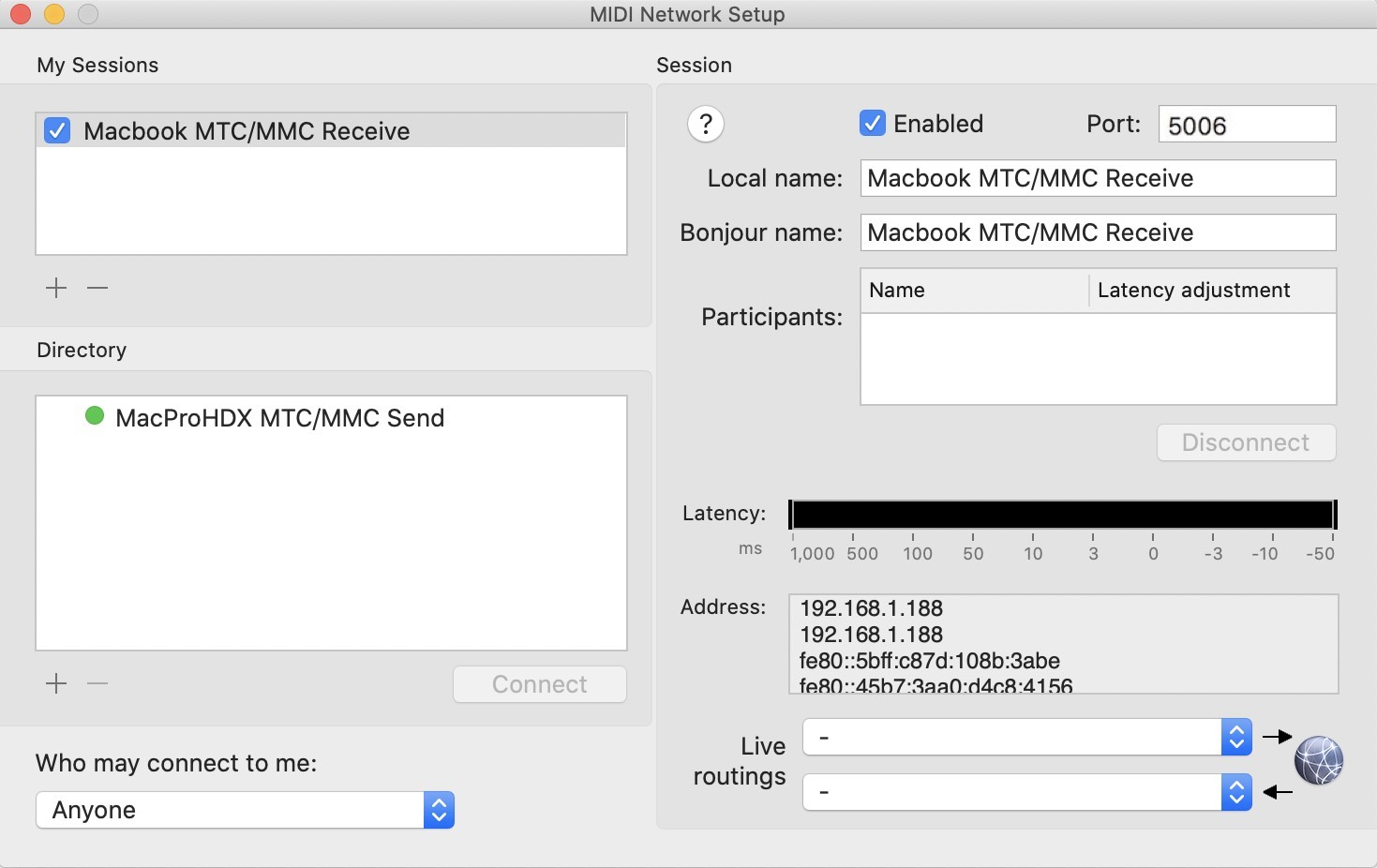 {width=80%}
{width=80%}
Connecting the Network MTC/MMC Sessions
Now that the two Sessions have been created, the next step is to connect them.
The steps until this point should not need to be done again in future. The following simple steps to connect only need to be done once every time the computers are restarted.
With the (computer 2 name) MTC/MMC Receive session selected in the My Sessions box, select (computer 1 name) MTC/MMC Send in the Directory field, and hit the Connect button.
(computer 1 name) MTC/MMC Send should now appear in the Participants: field on the right.
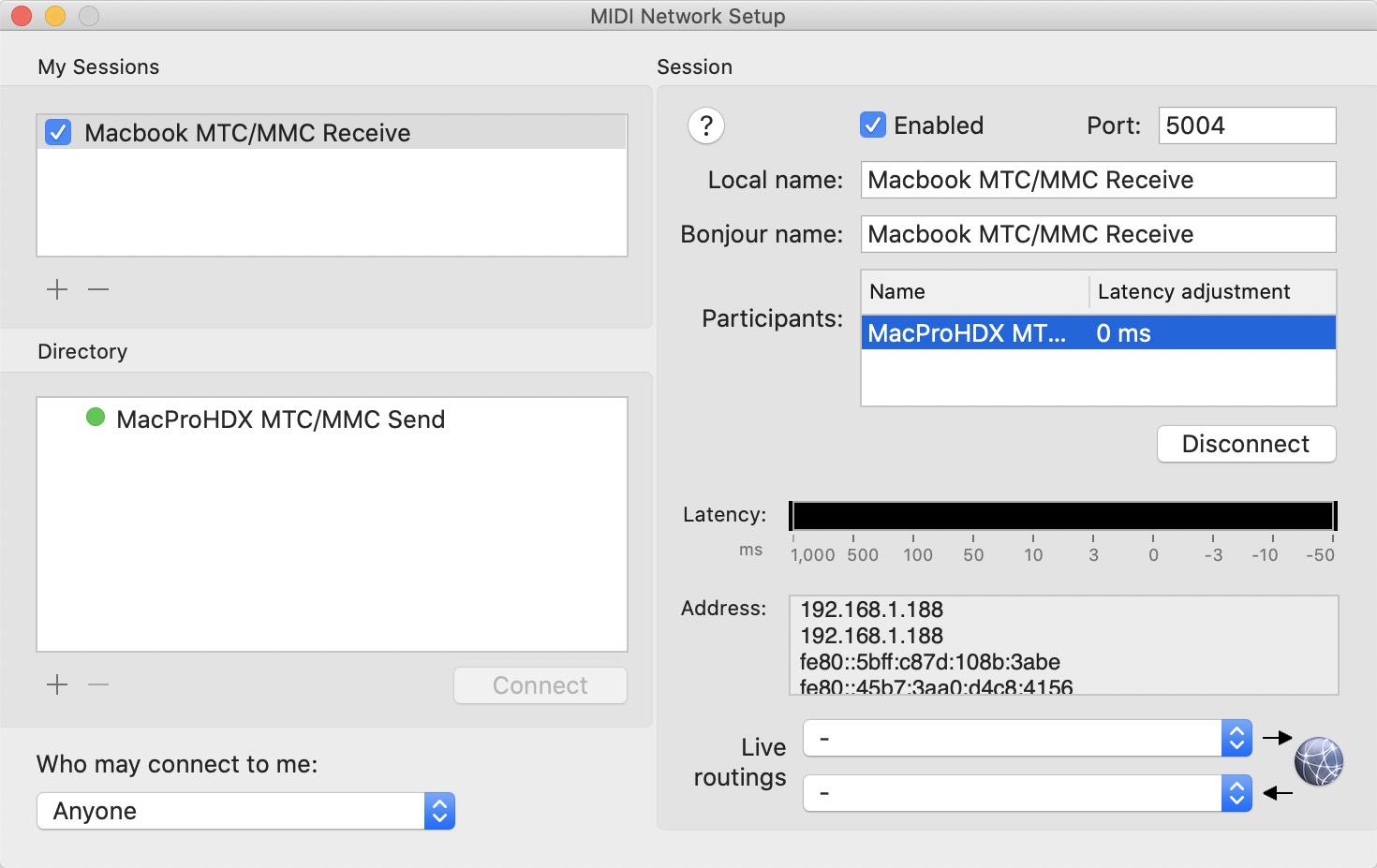 {width=80%}
{width=80%}
Regardless of which computer is chosen to Connect, only one of the computers needs to connect to establish the connection.
On the Ableton Live! computer, (computer 2 name) MTC/MMC Receive should now also be seen in the Participants: window.
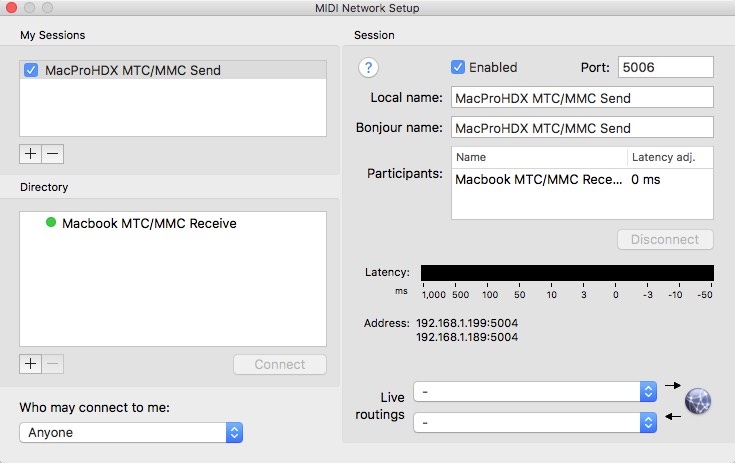 {width=80%}
{width=80%}
If the (computer 2 name) MTC/MMC Receive session does not show up in the Directory list, try re-launch Audio-MIDI-Setup.
Video Sync MTC / MMC Setup
Launch Video Sync.
If Video Sync was open already, use the "Rescan Available MIDI Ports" button in the SYNC preferences.
To show the MIDI I/O options in Video Sync, first navigate to the SYNC tab of the Preferences window.
Set the Sync Source field to Other
Next, select Network (computer 2 name) MTC/MMC Receive in both the MTC In & MMC In fields, as per the image below:
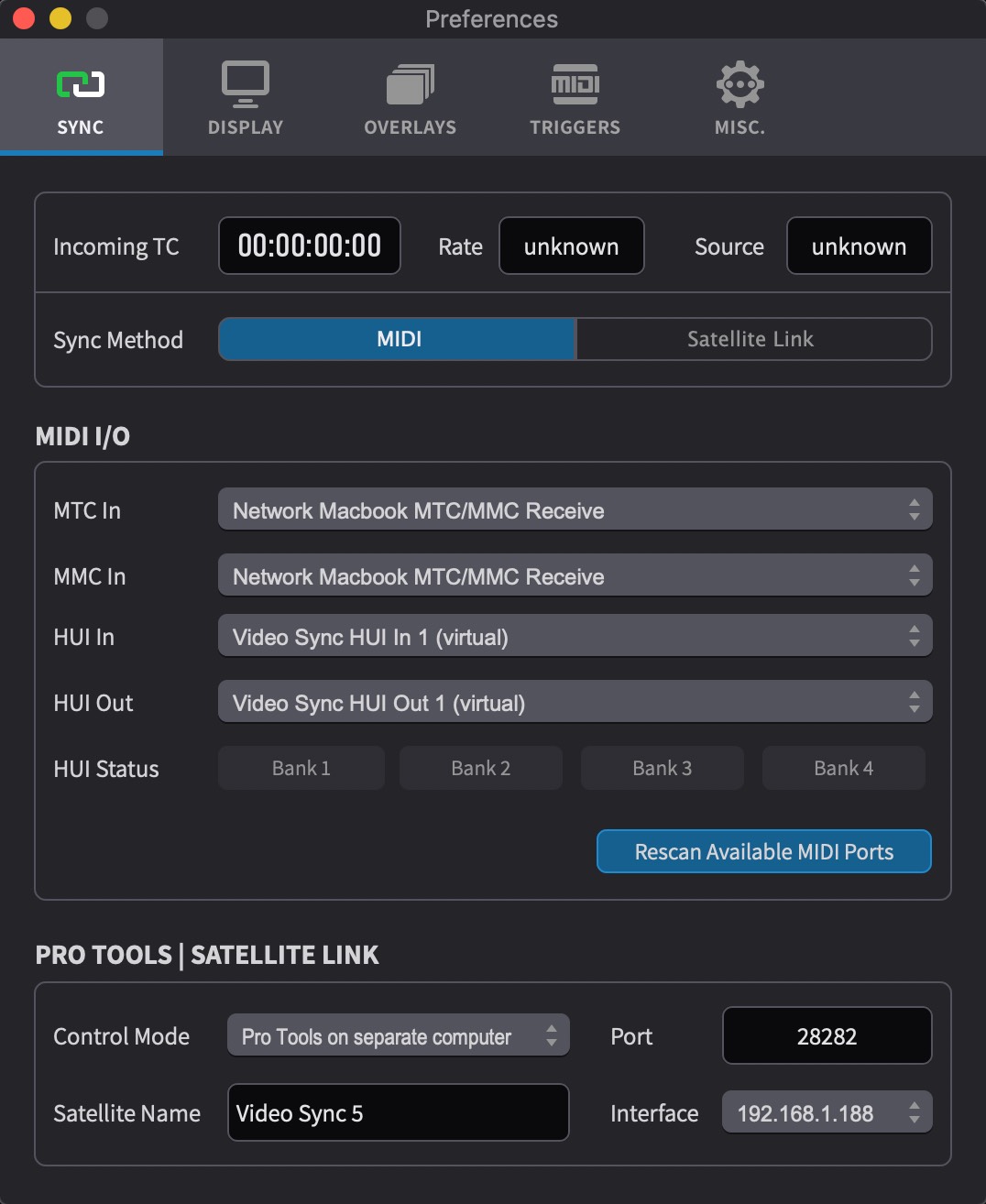 {width=70%}
{width=70%}
Ableton Live! Network MTC (MIDI Timecode) Setup
Although Ableton acknowledge the importance of supporting MIDI Timecode and MIDI Machine Control in future, Live! currently does not natively support either protocol. To work around this limitation, a Max4Live instrument called LiveMTC is required.
First confirm whether Max4Live was installed with the current installation of Live! If you are running Ableton Live! Suite - then it will already have been installed. If you are running Ableton Live! Standard version, you may need to purchase, download & install Max4Live separately.
Next download LiveMTC.
Unzip the downloaded file. Move the unzipped folder to the Applications folder.
The unzipped folder contains the Live MTC Bridge app and the MTC.amxd plugin.
Drag this folder onto Live!, under Places in the left browser to store it for future use.
From the new shortcut to the folder in Places, drag the MTC.amxd plugin onto the Master track in the current session.

In the Finder go to the Applications>LiveMTC folder & launch the Live MTC Bridge app.
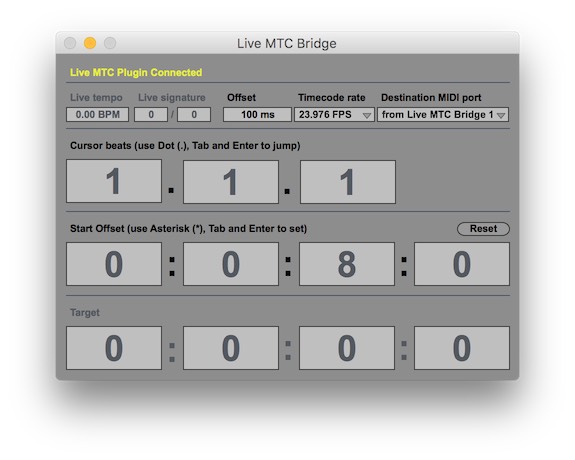 {width=80%}
{width=80%}
Set the Destination MIDI port in the dropdown to (computer 2 name) MTC/MMC Receive (in our example named Network Macbook MTC/MMC Receive).
If Video Sync is launched after the Live MTC Bridge app, Live MTC Bridge will need to be restarted, as it only scans for the available MIDI ports when starting up.
If necessary, set the timecode offset to match the Video Sync movie timecode settings.
Ableton Live! Network MMC (MIDI Machine Control) Setup
There is no need to set up MMC separately with Abelton Live! as Live MTC Bridge sends MMC style positioning information using a bespoke implementation of MIDI Timecode (MTC).
However, due to a limitation in the way that Showsync have implemented MMC in LiveMTC, support for the playhead moving to the correct stationary position when clicking around the timeline of the Ableton Live! is only possible with 23.976 & 24fps.
In this case, hit play & stop to update the playhead position using MTC.
We would like to thank the developer, Showsync for creating the LiveMTC bridge application. More information on using LiveMTC can be found here.
Enabling Synchronised playback
When hitting play or scrubbing within Ableton Live!, both the incoming timecode field should now be seen incrementing & the timecode rate displayed within the Incoming TC section to the left of the main timecode counter in Video Sync.
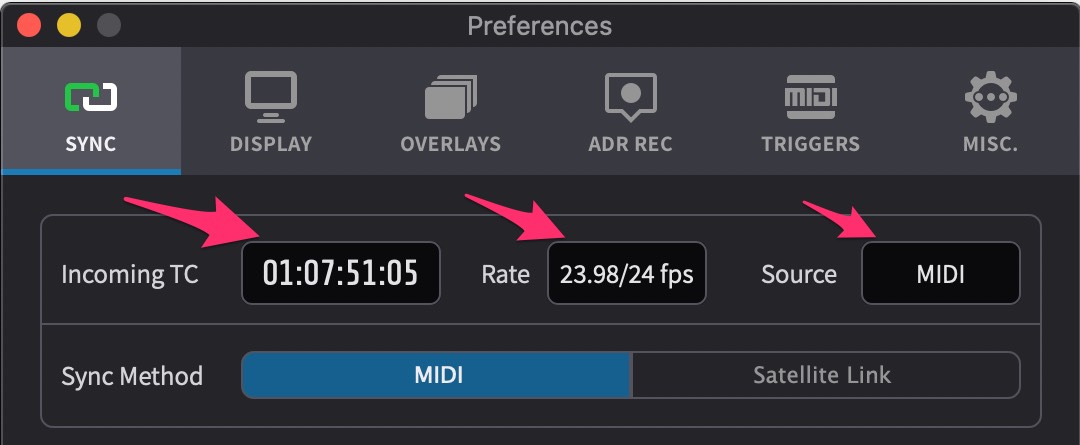 {width=70%}
{width=70%}
If the Sync button to the left of the transport buttons isn't already blue, click on it to activate it to follow external sync.
 {width=40%}
{width=40%}
Video Sync MTC/MMC sync is now online & ready to go. Hit play in Ableton Live! and Video Sync will play back in sync.
Dealing with MTC sync with high frame rate content
Video Sync allows for synchronised playback of clips running at up to 60 frames per second. Being a standard from the 80s, MIDI timecode (MTC) does not support frame rates higher than 30 frames per second. To be able to play timelines with these high frame rate clips in sync to MTC, Video Sync will try to match the incoming TC at half the frame rate. For example, if the timeline has a 50fps clip, Video Sync will play it in sync if a 25fps MTC source is supplied.
In the timeline list, the timeline frame rate is shown here:
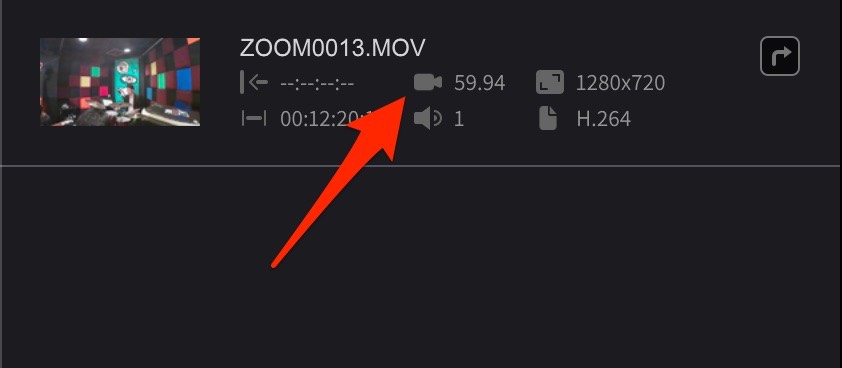 {width=60%}
{width=60%}
